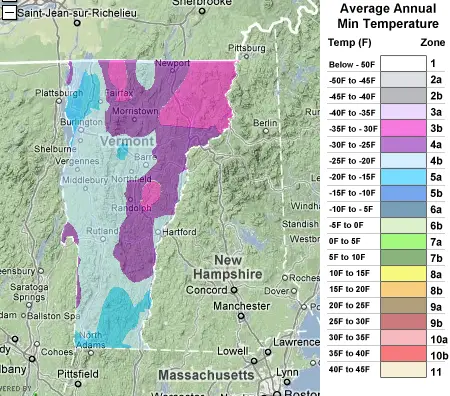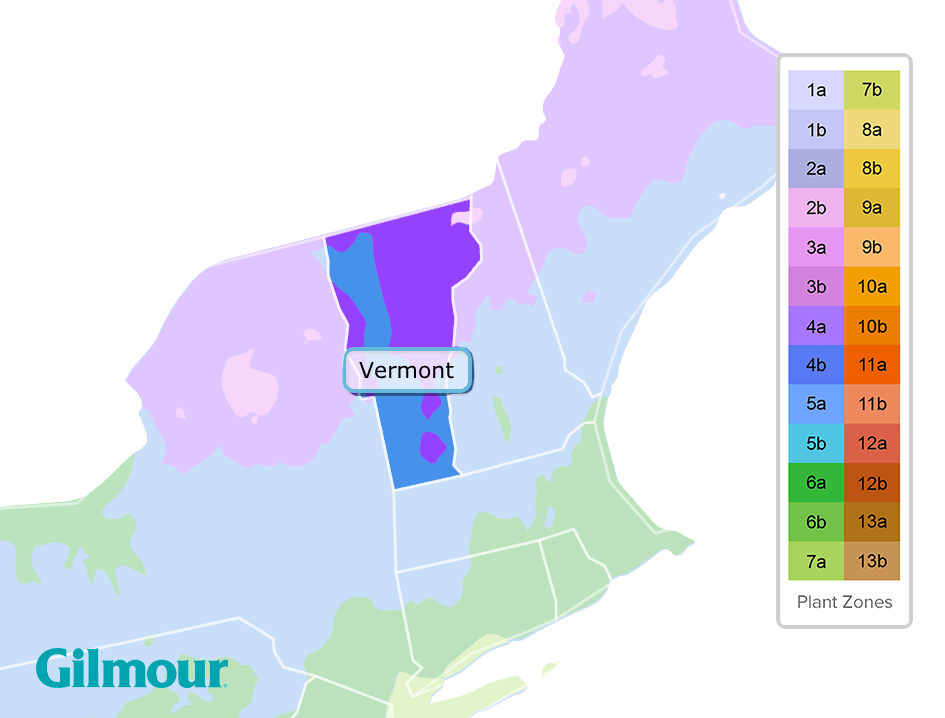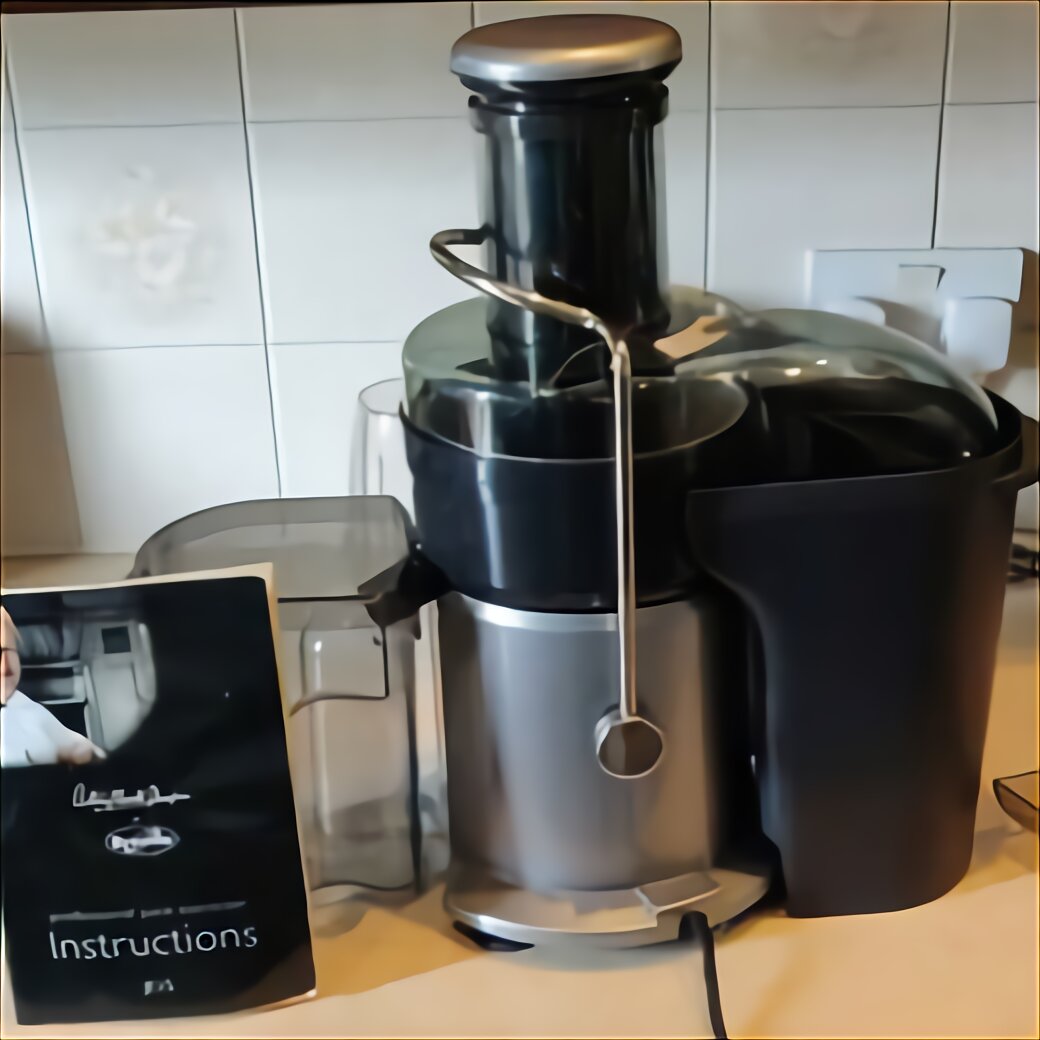As spring starts to bloom, it’s time to start planning your garden! Imagine stepping outside and being greeted by a lively garden, full of colorful flowers, thriving vegetables, and lush greenery. Whether you’re a seasoned gardener or just starting, knowing your plant hardiness zone is key to growing a successful garden.
Your plant hardiness zone is determined by the average annual minimum temperature in your area. It’s important to choose plants that will survive and thrive in your specific zone. Our team has gathered information on the plant hardiness zones in Vermont, so you can have a better idea of what plants will succeed in your garden.
The USDA has divided Vermont into five different plant hardiness zones: 3a, 3b, 4a, 4b, and 5a. The zones are determined by specific temperature ranges, so it’s essential to figure out the precise zone in which you reside. It’s important to note that our zone map comes with guidelines only and should not be considered gospel for planting only in regions’ plant hardiness zone.
In zone 3a, temperatures can drop to -40 degrees Fahrenheit during the winter. However, summers can reach temperatures of up to 85 degrees Fahrenheit, creating a unique climate. To ensure success in this zone, we recommend planting hardy vegetables such as kale, beets, and carrots that can handle colder temperatures.
In zone 3b, temperatures can range between -30 to -35 degrees Fahrenheit, with summer temperatures going up to 85 degrees Fahrenheit. This zone is best suited for plants like arctic kiwi or elderberry bushes, as they are hardy enough to survive harsh winters.
Zone 4a ranges between -30 to -25 degrees Fahrenheit in winter, with summer temperatures averaging around 86 degrees Fahrenheit. You can successfully plant perennial flowers such as asters and bee balm in these areas.
In zone 4b, temperatures range between -25 to -20 degrees Fahrenheit and can have a warm summer of up to 90 degrees Fahrenheit. If you’re looking to plant berries, raspberries or strawberries are a perfect option for this region.
Finally, zone 5a is the warmest zone in Vermont, with temperatures ranging between -20 to -15 degrees Fahrenheit during winter and reaching temperatures up to 95 degrees Fahrenheit in the summer. This zone is perfect for planting fruit trees like peaches or cherries, as they thrive in the warm climate of this zone.
Now that you know your hardiness zone, let’s talk about some practical gardening tips. Gardening is a fun and relaxing activity that requires patience, dedication and creativity. While starting your garden may seem overwhelming at first, here are a few tips to keep in mind:
– Choose plants that suit your hardiness zone.
– Consider the sun and soil conditions in your area.
– Make sure to give your plants enough space and nutrients to thrive.
– Water regularly but be mindful that over-watering can harm plants.
– Keep an eye out for potential pests or diseases.
With these tips in hand, you’re well on your way to a successful garden! Remember, gardening is an ongoing process that requires attention and care. But with a little patience and hard work, you’ll soon find yourself among the beauty of blooming flowers, healthy vegetables, and lush greenery.
If you are searching about Vermont Palm Trees you’ve visit to the right place. We have 8 Images about Vermont Palm Trees like Farmers Know Best: Vermont USDA Plant Hardiness Zones Map – Growing, Southern Vermont Permaculture (New England forum at permies) and also Vermont Palm Trees. Here you go:
Vermont Palm Trees

www.florida-palm-trees.com
vermont usda
Farmers Know Best: Vermont USDA Plant Hardiness Zones Map – Growing

www.farmersknowbest.com
zones vermont usda map growing plant hardiness farmers know list vt zone
Southern Vermont Permaculture (New England Forum At Permies)

permies.com
vermont zones vt usda plant southern permaculture permies
Virginia Planting Zones – Growing Zone Map | Gilmour

gilmour.com
vermont zone planting map zones gilmour growing
Farmers Know Best: Vermont USDA Plant Hardiness Zones Map

www.farmersknowbest.com
vermont zones vt hardiness plant map
Here Is How To Plant Colorful Caladiums To Brighten Shade Gardens All

stgeorgeutah.com
utah zones hardiness zone plant map gardening george st usda caladiums agriculture brighten shade cedar gardens colorful season link botany
View Maps | USDA Plant Hardiness Zone Map | Plant Hardiness Zone Map

www.pinterest.com
zones hardiness usda climate jessicaharlee
Zoning Out | Plant Zones, Planting Zones Usa, Gardening Zone Map

www.pinterest.com
planting hardiness usda zoning willow seed desertwillow cayenne bountiful
Zoning out. Vermont palm trees. Planting hardiness usda zoning willow seed desertwillow cayenne bountiful
 markanthonystudios.net Mark Anthony Studios Site
markanthonystudios.net Mark Anthony Studios Site


